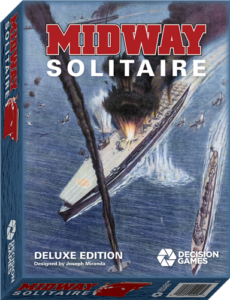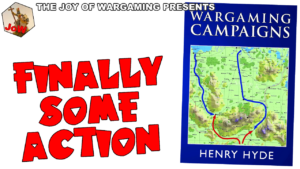Fans of the channel know my record at setting up and running wargames is… let’s be generous in college body, at best. As I approach the beginnings of a new campaign, I find myself on completing the components of the successful campaign in the abstract rather than the specific.
1. Limited in scope, both geographically and temporally. It needs a well-developed sandbox to shove toy soldiers around in, and a clear beginning, middle, and end.
2. When designing a historical campaign, it helps to have a clear idea of the starting orders of battle, starting positions, and potential reinforcements with a possible chronology of arrival. Given gaps in the historical record, and the fun and investigative nature of “what if” scenarios, designers have a good deal of leeway in this department. Thank, subtle variations in rosters can add considerable replayability to a well-designed campaign.
 3. The same holds true for leaders. Big personalities allow for well-defined special abilities or fatal flaws. Effective leaders can make all the difference in the world, but…what if? The classic example: what if the methodical Napoleon was healthy enough at Waterloo to keep the critical decision out of the hands a brash cavalryman? Swapping out those two commanders made a difference in the real world, and it should make a difference in our tabletop world.
3. The same holds true for leaders. Big personalities allow for well-defined special abilities or fatal flaws. Effective leaders can make all the difference in the world, but…what if? The classic example: what if the methodical Napoleon was healthy enough at Waterloo to keep the critical decision out of the hands a brash cavalryman? Swapping out those two commanders made a difference in the real world, and it should make a difference in our tabletop world.
4. Multiple paths to victory. The importance of this one is debatable. Some people enjoy a linear campaign, in which their options are constrained. Most cases, players want a lot more freedom of movement. They want to be able to choose from a menu of objectives, and the ability to switch on the fly, in accordance with events that unfold.
5. Even chances at victory for both sides. Note that asymmetric forces and asymmetric victory conditions may preclude zero-sum games. The point here is that even lost cause campaigns should create a metric by which the underdog can measure success. Perhaps he has to do better than his historical counterpart. Perhaps he has to inflict enough damage on his opponent to curse with with a Pyrrhic victory, rather than an outright victory.
That’s a very good start, and there are probably other principles not listed. They do make a good start. There are two other factors that bears consideration:
- Literary terms you might call it the “inciting incident”. This is the event that kicks off the action. Most conflicts consist of a long period of gathering resources both sides feel too insecure to risk open battle. At some point, something changes, and one or both of the leaders switch from risk averse to risk takers. It might be new intelligence, good or bad. It might be political change in the halls of power. Might be something as simple as a change in the weather. Whatever it is, that’s the moment the campaign begins. That’s subtle shift from “not ready” to “let’s GO!”, that is the crack of your campaign’s starter pistol.
- The campaign should matter. Some way, even the smallest campaign should have significant effect on the broader conflict.
Yes, I have a campaign in mind. No, I’m not ready to talk about it yet. It’s still in the planning phases, but rest assured, when I’m ready you’ll read all about it.



